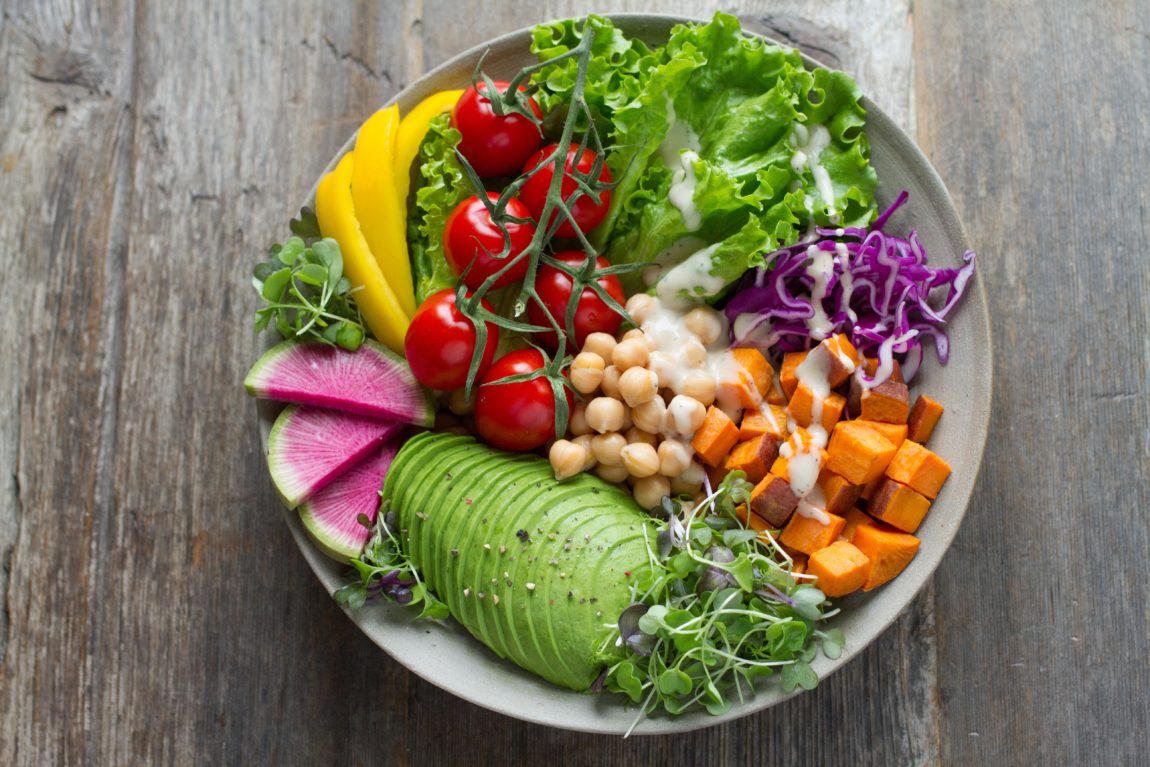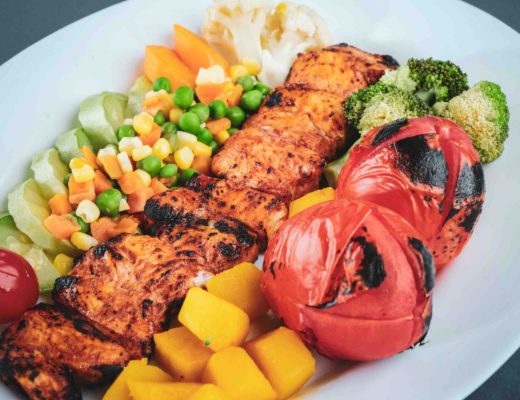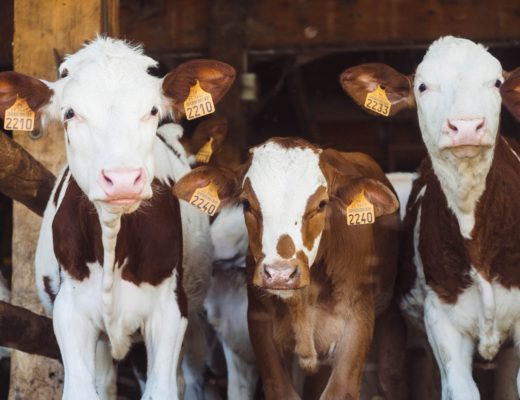After all of the indulgence of the holidays in December, eating and drinking everything I wanted, (Christmas cookies! Prosecco! 3-cheese dip! You get the point…), I knew I wanted to start the new year off right, with a nutritional boost. I am a big believer in a clean slate and new beginnings, so I thought January would be the perfect time to try a whole-food plant-based diet.
For my first cleanse, I didn’t want a plan where I was just drinking juice or bone broth all day. A girl’s gotta eat! So, I chose a mild, whole-food, plant-based diet, that a close friend recommended, after trying it herself. I figured if my friend got through it, and had positive things to say about it, then it was worth giving it a go.
The program is called Wholefully Aware, and it was put together by Pam Yudko, who is a holistic health, and transformational coach. Her philosophy behind this whole-food, plant-based diet is to clean our bodies of the toxins that build up and cause inflammation. She also explains that a cleanse allows us to figure out which foods are working for us and which ones might be causing uncomfortable symptoms and ailments. These could range from bloating and stomach pain to congestion and chronic headaches.
One of the biggest issues I have is constant congestion – kind of like a cold all year round. I’m always sneezing, blowing my nose, and dealing with a sore throat. I was hopeful that this whole-food plant-based cleanse might clear up some of these symptoms.
This post contains affiliate links. If you click on one of them, I may earn a small commission (for which I’m very grateful!) at no extra cost to you. You can view my disclosure here.

What to Eat and What to Avoid on a Whole-Food Plant-Based Diet
The foods allowed on this whole-food plant-based diet include most non-citrus fruits and vegetables (minus nightshades), some grains like brown rice and quinoa, legumes, including lentils, chickpeas, adzuki beans, and cannellini beans, and unsalted nuts and seeds. It also encourages consuming healthy fats, like avocado, coconut oil, and extra virgin olive oil.
The things you are eliminating on the cleanse are sugar, artificial sweeteners, alcohol, citrus fruits, and juice (except for fresh lemon juice), yeast, dairy products, animal proteins, fermented foods except for apple cider vinegar, fermented soy products, dried fruits, gluten, corn, nightshade plants, peanuts, refined oils, stimulants, and processed food.
I know the list of foods to eliminate is long, and it can feel intimidating. But as I learned, if you do your prep and set yourself up for success, you will see changes and improvements from the cleanse, including weight loss, increased energy, and a general sense of well-being. Below, are my 7 -takeaways from my experience with this whole-food plant-based diet.
Related: Curious to know more about juice cleanses? Click here to read about everything I learned when I tried a 3-day juice cleanse.

Eliminating Dairy and Wheat Really Makes a Difference
I have been gluten-free on and off for a while now, so I wasn’t very anxious about eliminating this during the whole-food plant-based diet. Dairy, however, is another story. I love using whole, organic milk in my coffee, and I’ve never met a cheese I haven’t loved! But once I started the diet, I didn’t miss dairy. It helps that I wasn’t eating out during the cleanse, so I wasn’t tempted by dishes with cheese or yogurt. But the main reason I’m sticking with a diet of no gluten and no dairy now, even though I’ve finished the cleanse, is because many of my chronic symptoms – congestion, bloating, fatigue – have cleared up.
If you’re considering eliminating gluten and dairy from your diet, the good news is that now there are so many great alternatives out there. I always use almond milk and oat milk now instead of regular milk. (Pro-tip: If you have a milk frother, oat milk froths better than almond milk for lattes and cappuccinos.) For baking, my go-to flour is Bob’s Red Mill Paleo Baking Flour.
My favorite gluten-free and dairy-free snacks include Simple Mills crackers, Hu chocolate, (Honestly, I’ll eat any food that Hu makes because it’s such a high-quality, health-conscious brand!), Siete chips, and Snyder’s gluten-free pretzels.
Related: Want to eat healthily but still enjoy dessert? Check out these healthy, holiday dessert recipes which are great to make year-round! And this gluten-free cookbook is another great resource for clean eating.
I Missed Eating Animal Proteins on This Whole-Food Plant-Based-Diet
While I never felt hungry while on this whole-food plant-based diet, I definitely missed eating animal proteins, including eggs, fish, and lean meats. It wasn’t just a mental thing, but my body craved these proteins. I work out a lot, so that might be part of the reason, so this is something I slowly re-introduced back into my diet after the cleanse ended.
Related: How to change to a mostly plant-based without giving up meat
Coffee Was Much Harder to Wean off of Than I Anticipated
Okay, I admit it now. I’m a full-on, coffee, and caffeine addict! I mean, I knew this, but what I didn’t anticipate is how hard it would be to wean off of coffee while following the strict guidelines of this whole-food plant-based cleanse. For the first three days, I had a headache on and off, and I did feel like I was in a bit of a fog. I also missed the ritual of drinking my cup of coffee in the morning. I tried to replace that with a cup of herbal tea. It helped, but it just wasn’t the same! If you are a coffee drinker and you are going to try this cleanse, I highly recommend taking a week to ten days to wean yourself off of caffeinated coffee before beginning the diet.
Just an update here: I recently did this cleanse again, (November 2020) but this time I did not give up coffee. I wanted the health benefits of the cleanse but I did not want to go through caffeine withdrawal and honestly, with the year we’ve had, there was no way I was giving up my coffee! My point here? Do what works for you. If you want to do a cleanse but still drink coffee, that’s fine. (Just don’t add the sugar or artificial sweeteners you might normally use.)
I Lost Weight, No Longer Felt Bloated and My Congestion Has Cleared Up
By the end of day three on the cleanse, I definitely felt a difference. Even though my head was still a bit foggy, my body felt lighter and my bloating disappeared. When I finished the 7-day program, I had lost 2.5 lbs., (This wasn’t a goal of mine but a nice bonus!), and I no longer felt like I had an extra bit of fat around my waistline. Even better, my congestion almost completely cleared up. This has been a game-changer for me.
Meal Planning and Food Prep is the Key to a Successful Whole-Food, Plant-Based Diet
After completing this whole-food plant-based detox diet, one of the biggest takeaways for me is the importance of meal planning and food prep. It is essential to do both of these for a successful cleanse (and in general, especially if you want to eat a healthy diet). Definitely, plan on spending a few hours doing food prep, either the day before you start the cleanse, or on day 1. I started the cleanse on a Saturday, and spent most of that day preparing and cooking my meals for the next few days. This helped me tremendously, especially when my hunger pangs hit. I could just open the fridge and heat up some food I had already made. I know it’s a drag to have to spend a few hours in the kitchen preparing food, but I promise you it’s the best way to set yourself up for success.
In general, I have realized the importance of meal planning and food prep. The cleanse gave me the nutritional boost I was looking for, but in order to maintain these healthy eating habits, I need to make meal planning and food prep part of my regular routine.
I Saved Money
Who doesn’t love to save money? Right? When I first purchased the ingredients for this cleanse, I had a bit of sticker shock. It added up to almost $300. But when I broke down this number by the amount I was spending per day, it was about $40. That’s a pretty good food budget for someone living in NYC, where a latte can cost over $5 and a typical dinner out with a glass of wine can cost $50.
But how did I actually save money? By not eating out. Typically, my husband and I might eat out three nights a week. That’s basically $200 – $300 right there. By cooking my own food and eating every meal at home, I saved a ton of money. And it didn’t mean I had to forego my social life. I just changed it up. I met friends for exercise classes and afternoon tea dates instead of at night out on the town.
We Stopped Ordering Take Out as Much
Something my husband and I are both guilty of is ordering too much take-out. This ties into the meal planning and food prep. Because we haven’t done this in the past, we’d often come home, starving, with no food in our fridge, so the easiest thing to do would be to order delivery. Even though we know how unhealthy that food is, we’d do it anyway. Now that I’ve been eating clean and planning our meals ahead of time, we’ve really cut back on ordering in. This has helped our wallets and our waistlines!
A Sample Recipe from the Cleanse
If you’re still not sure if a cleanse is right for you, try the recipe below. This Green Goddess Curry is a typical meal from the Wholefully Aware program and I thought it was delicious and satisfying!
(Please note, since I originally published this post, Pam Yudko is no longer doing the Wholefully Aware program, but there are many similar cleanses to choose from like this one from Simple Green Smoothies.)
(Related: Try this recipe for a satisfying, breakfast smoothie)

Green Goddess Curry
[Serves 4]
INGREDIENTS
2 tablespoons coconut oil
1 onion, peeled and diced
2 tbsp. green curry paste or powder
1 cup green beans
1 medium broccoli, cut into florets
ó cup snow peas
A small handful of Brussel sprouts halved
2 cups garbanzo beans, cooked or canned
1 15oz can of unsweetened coconut milk
4 cups vegetable broth
2 bunches of any type of greens, washed and cut (kale, bok choy, escarole, collards, turnip greens, etc.)
Salt and pepper to taste
Fresh cilantro for garnish
In a large pot heat coconut oil and sauté onions and curry spices until the
onions are soft (about 6-8 minutes). Add the vegetables, beans, and
coconut milk. Bring to simmer and add the vegetable broth. Simmer until
the vegetables are tender (about 15 minutes). Add the greens, then season with salt and pepper.
Serve with brown rice. Garnish with cilantro.
Are You Ready to Try a Whole-Food, Plant-Based Diet?
Now I’d love to hear from you!
What are your thoughts on detox diets and plant-based cleanses? Have you tried any in the past that you would recommend? Are you now considering trying a whole-food, plant-based diet to feel healthier?
Please share your comments below and let me know if you have any questions!
Related: What I learned When I Stopped Drinking Alcohol for a Month.
Related: How to Change to a Mostly Plant-Based Diet Without Giving Up Meat
Related: A Round-Up of 10 Tasty and Healthy Holiday Desserts
Related: Everything I Learned When I Tried a 3-Day Juice Cleanse

Pin it for later!
Want more travel and wellness tips? Sign up for the Let’s Be Merry newsletter!






4 Comments
5 Day Meal Plan #8 – Planted InJoy
February 23, 2020 at 7:28 pm[…] Friday: Green Goddess Curry from Let”s be Merry […]
Merry Lerner
February 26, 2020 at 3:22 pmGlad you like the recipe enough to share!
Erika
January 31, 2018 at 11:16 amThis is a great recap and inspired me! I’ve read so many first person accounts of these sort of diets and re-sets — your’s is the most engaging and motivating. Thank you!
Merry Lerner
February 2, 2018 at 12:33 pmI’m so happy to hear that! If you try a cleanse or elimination diet, please let me know how it goes!